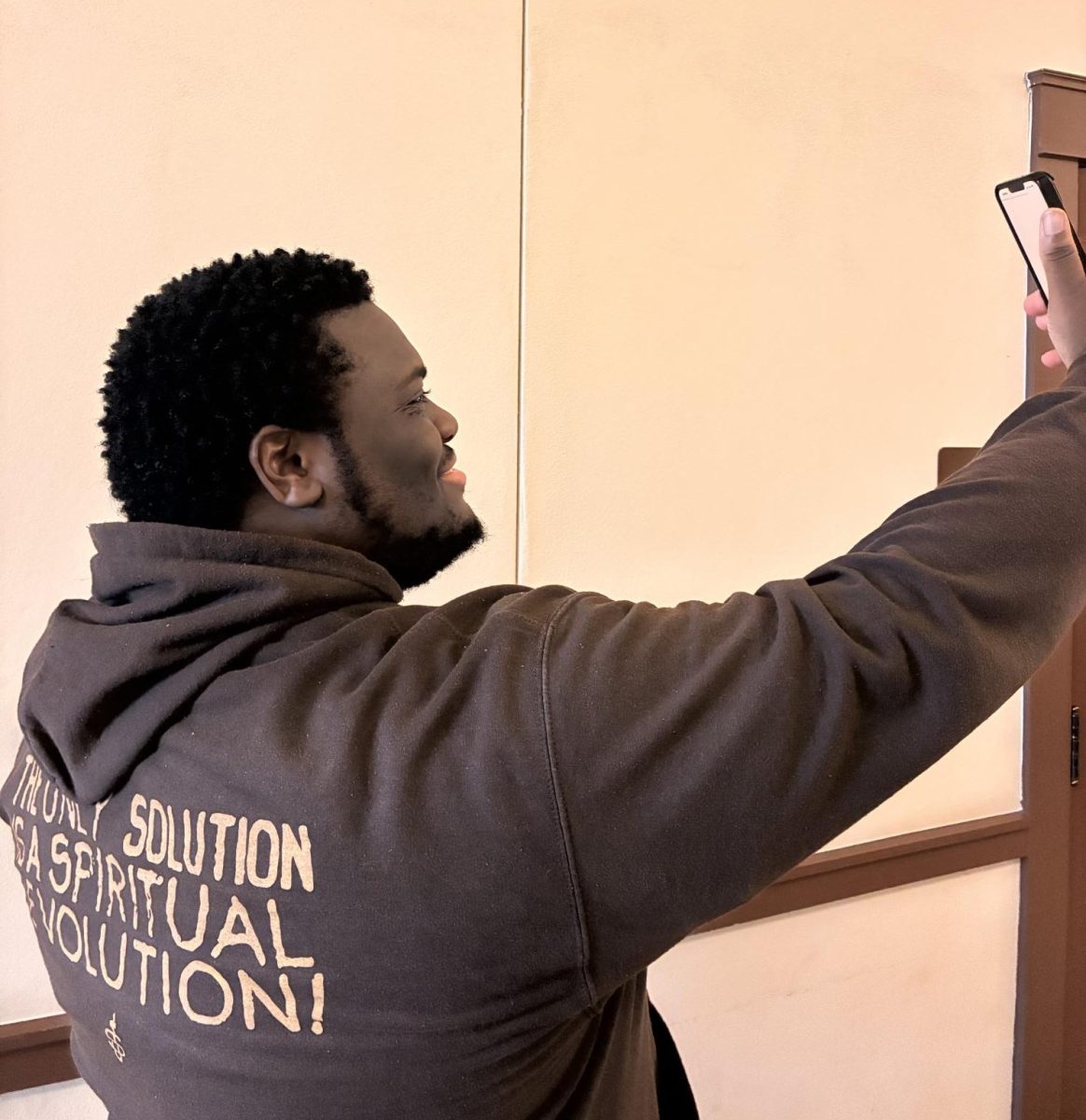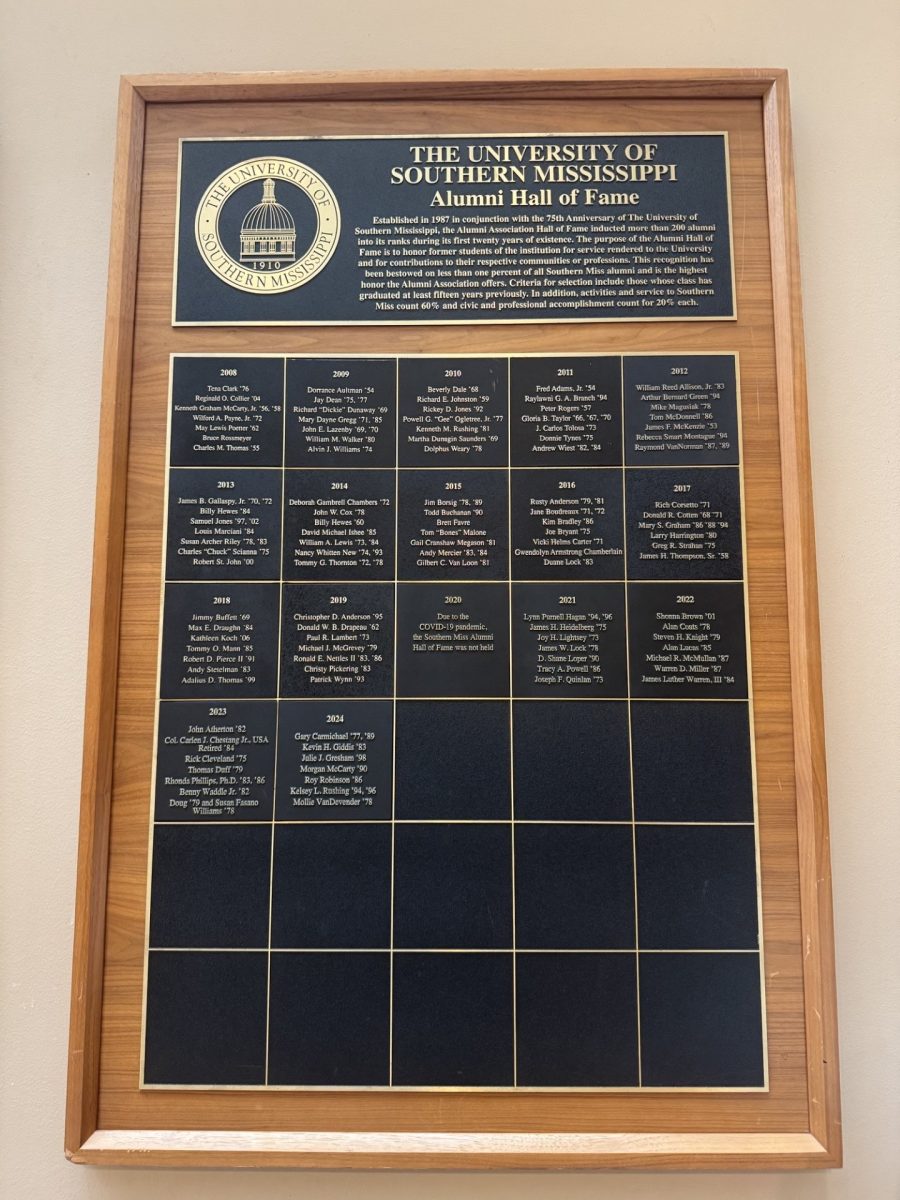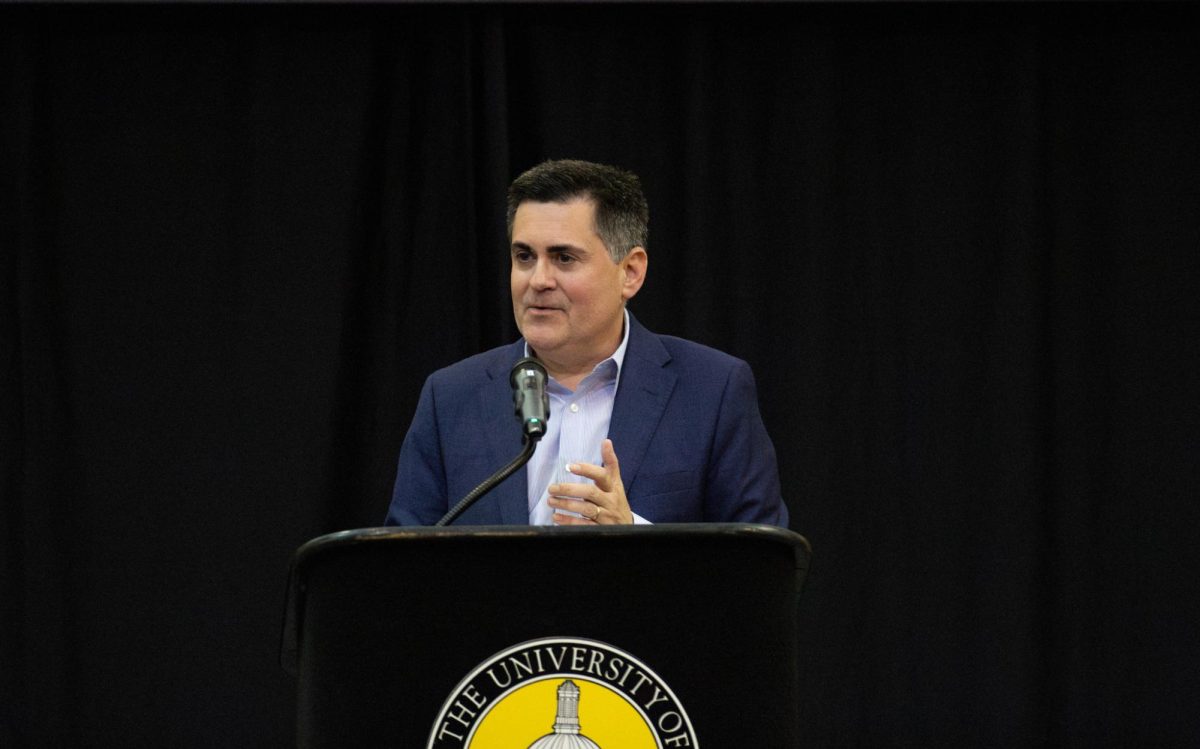Students and faculty seek answers to fix potential water damage inside College Hall.
The building is home to the School of Media and Communication. According to faculty and students of the school, the most noticeable area is located in the inside stairwell on the west side of the building. They cite peeling paint and water stains on the floors and walls as examples of damage.
Students expressed concern that equipment used by the school may get damaged by water.
“We have a whole lot of expensive equipment that the school has spent a lot of money on. Keeping up the maintenance and just making sure the equipment is out of harm’s way is extremely important,” said Olivia White a sound major.
Haydn Jackson, a junior in the School of Media and Journalism, echoed similar sentiments.
“In our recording studio alone, we probably have upwards of half a million dollars worth of equipment.”
Graduate student, Oare Addeh, expressed her concerns on how others might perceive the situation if it’s not fixed.
“I think that management should get someone to fix this,” she said. “We do not want other people that come from other departments to wonder about what’s going on in this hall and why they haven’t fixed it.”
Students aren’t the only ones voicing concerns. Paul Linden, a professor of Communication, shared his thoughts about the ceiling’s current state.
“I haven’t seen any water associated with it but it’s my understanding that water is causing it,” he explained. “If water is involved, mold is usually not far behind.”
School officials are aware of the issue and relayed the complications surrounding fixing historical buildings on campus such as College Hall, which was built in 1910.
David Bounds, the Director of Campus Planning and Safety at the USM physical plant explained the process includes the submission of a “Notice of Intent” (NOI) to the Mississippi Department of Archives and History, which oversees the restoration, repair and maintenance of all historical buildings on campus and throughout the state.
“On that notice of intent, we have to tell them the name of the building, the year it was built, what we think the problems are, and what we think the remedy is,” Bounds said.
He further explained that the panel reviews the Notice of Intent and may decide to grant a permit if the grout used for the tuckpointing closely matches that of the original building.
“That’s what we are in the process of doing now, matching the grout and sending the pictures,” added John Jones, Superintendent of Building Trades.
Bounds disclosed that the aim of this process is to preserve the original structure of the building, such that an average sightseer would not be able to identify the changes that have been made. He mentioned the Math Zone and Bennett Auditorium as campus buildings that had undergone similar renovations.
“We have to pick times when these are going to be less of a disturbance,” he explained. “So, that is even another factor.”
He confirmed that the peeling plaster in the College Hall ceiling was caused by water penetration from the walls.
“This happens to every historical building throughout the nation, because the brick is not as dense as modern brick and water will penetrate through the brick and go into a cavity,” he said.
But despite the complications of renovating historic buildings, Physical Plant officials hope to get started soon.
“We are hoping to have the mortar matched and approved so that we can start around fall break,” Jones said.
College Hall grapples with water damage
0
Donate to SM2
Your donation will support the student journalists of University of Southern Mississipi. Your contribution will allow us to purchase equipment and cover our annual website hosting costs.
More to Discover
































